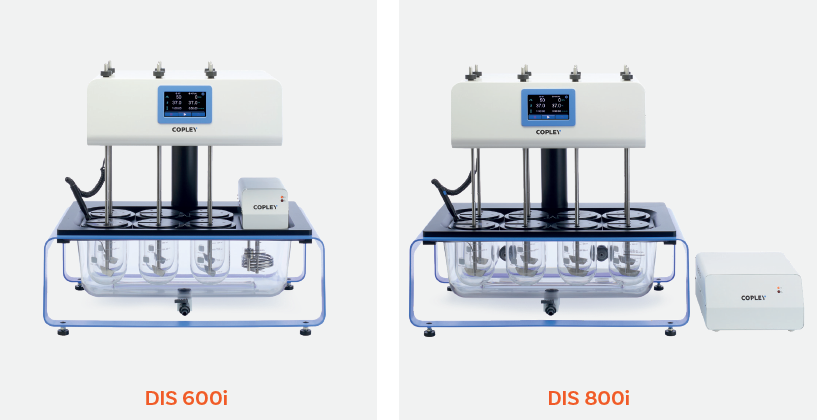Quality Assurance-Physical
Dissolution Testing
Optimising the amount of a drug available to the body following administration, i.e. its bioavailability, remains one of the greatest challenges the pharmaceutical industry faces. Inadequacies in bioavailability can mean a treatment is ineffective or even potentially dangerous (e.g. overdose).
The progressive optimisation of dissolution testing for different pharmaceutical forms has led to the introduction of a range of different apparatuses and techniques as detailed in Ph. Eur Chapters 2.9.3, 2.9.4 and USP Chapters <711> and <724>.
Determining bioavailability via in vivo drug release analysis studies (e.g. urine or plasma analysis) can be impractical, particularly when such techniques are required on a routine basis. To overcome such issues, official in vitro dissolution tests have been rigorously and comprehensively defined in the respective Pharmacopoeias and are essential for:
- Predicting in vivo drug bioavailability.
- Assessing bioequivalence and its application in scale-up and post-approval changes.
- Optimising therapeutic effectiveness during development and stability assessment.
- Ensuring uniformity between production lots.
The most commonly used apparatus defined by the Pharmacopoeias to measure the dissolution rate of solid dose forms are the basket and paddle. The basic dissolution apparatus consists of a covered cylindrical vessel with a hemispherical bottom, typically holding 1000 mL of simulated gastric juice. The vessel is immersed in a water bath capable of maintaining the temperature of the vessel contents at 37 °C. For the basket method, the tablet or capsule is constrained in a cylindrical basket, constructed of sieve mesh, of defined proportions. The basket is attached to a metal drive shaft, positioned so that the bottom of the basket is 25 mm from the bottom of the vessel. Samples of the dissolution medium are taken at predefined time intervals to determine the percentage of dissolved drug present – typically using a UV/Vis Spectrophotometer or high-pressure liquid chromatography (HPLC).

Expertly engineered systems for everyday dissolution testing.
Meeting the latest specifications as laid down in the European, United States and associated Pharmacopoeias, the DISi Series from Copley is a range of reliable and cost-efficient dissolution tester systems designed with the highest standards of solid dosage testing performance in mind.
Copley DISi Series features six (DIS 600i) and eight (DIS 800i) stirred vessels. Ideal for use in both R&D and QC environments, the DISi Series is equipped with precision ground shafts that will accept any of the baskets, paddles or rotating cylinders described in the Ph. Eur., USP and associated Pharmacopoeias. Designed to minimise user training and reduce the burden of routine equipment maintenance, the DISi Series simplifies the dissolution testing process, without compromising on data quality.
DISi Series: Key Features
- Easy-clean Viton® membrane-sealed zero-evaporation lids included as standard.
- Intuitive touchscreen control with icon-based menu structure simplifies operation.
- Robust metal case with advanced corrosion protective coating.
- PT100 temperature probe monitors bath and vessel temperature with electronic calibration feature.
- Independent digital heater/circulator maintains a constant temperature and minimises vibration.
- ‘Easy-Centre’ centring system for precise vessel positioning.
- Maximum fill line indicator.
- Convenient screw-in basket/paddles enable easy method change in seconds.
- All vessels are serial-numbered as standard.
- Easily removable leak-proof water bath with convenient drain tap eases bath water emptying.

